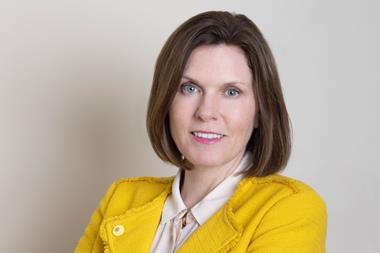Over 23 million customers could be left behind by increased digitalisation, explained a report
Biba 2022: Firms’ increased use of digital processes has triggered an “incredible challenge” – coined the “digital divide” – said Lauren Glover, head of specialist care at Sedgwick.
Glover was speaking as part of a fringe session entitled Why digital doesn’t click for all and how to make it more inclusive at the Biba Conference 2022, this afternoon (11 May 2022).
“The digital divide is the gap between those who are digitally included and those who are digitally excluded”, said Glover.
Digitally included refers to people who use digital devices at least to a basic level, up to those who are highly digitally engaged.

Digitally excluded, on the other hand, refers to – often vulnerable – people who have low digital engagement and lack basic digital skills. These people “can’t independently use a device or the internet”, explained Glover.
She added that insurance companies could be leaving behind a whole section of digitally excluded customers in their drive to become more digital.
According to Lloyds Bank UK Consumer Digital Index 2021 released in May 2021, 2.6 million people are still offline.
Furthermore, 20.5 million adults have low or very low digital engagement.
Of those who had not used the internet in the last three months, 51% of respondents said their reason they had avoided going online was that they were worried about privacy and security. The same number of respondents added that they were worried about their identity being stolen.
The UK Consumer Index report is based on two data sets – transactional data from one million UK consumers and a 2,700-strong subset of those consumers who were surveyed via telephone.
Other barriers to accessing digital benefits included financial difficulties or poverty, such as those who could not afford an internet connection. “Older people who have had to learn about digital skills or processes much later in their lives” are also affected, explained Glover.
Low numeracy and literacy capability, in addition to mental health, for example, also play a part in the digital divide.
“It is [therefore] so important to remember that a customer is a person with thoughts, feelings, challenges and different skill levels. We are not all the same,” said Glover, adding that she believed there was a “level of digital engagement” for everyone if individuals’ wants and needs are addressed successfully.
Cue digital society
To garner a deeper understanding of customer experiences and where individuals most need additional support, Sedgwick uses Google Analytics. Using the web analytics service enables the firm to flag vulnerable customers, by determining where they are spending longer amounts of time on particular parts of their digital journey.
But what is the solution for those individuals who can’t access online information, or those who don’t know how to use the internet?
Addressing this issue, Glover highlighted the actions of charities using digital buddies and digital champions as a solution. She added that this could also be an option for insurance firms to widen the pool of clients.
“Some are face to face, some are over the phone, but essentially the digital buddy or champion provides digital support to the customer depending on their needs,” she explained.
For example, in August 2021, Citizens Online started working in partnership with Triodos Bank to support its digital journey. Customers can now gain free, one-to-one telephone support with a digital champion who can help with things such as how to get different devices online, how to stay safe online and how to use the internet.
In its Lloyds Bank UK Consumer Digital Index 2021 report, the bank said: “We must provide the motive and capability for these individuals to get online and provide an environment in which they are comfortable and confident to learn.
“Given the faster pace of technological growth and a world that now assumes digital competence, it is even more crucial that organisations design interactions that are as frictionless, accessible and as simple as possible.
“Service providers have a duty to ensure that assistive technology and inclusive design principles are applied throughout service development, enabling everyone to participate in a digital society.”
Hosted by comedian and actor Tom Allen, 34 Gold, 23 Silver and 22 Bronze awards were handed out across an amazing 34 categories recognising brilliance and innovation right across the breadth of UK general insurance.
Biba Conference 2022

Biba’s Steve White says that the winner is ‘one to watch’
- 1
- 2
- 3
- 4
- 5
- 6
- 7
- 8
- 9
- 10
- 11
- 12
- 13
 Currently
reading
Currently
reading
Increased digitalisation is resulting in a damaging ‘digital divide’
- 15

















































































No comments yet